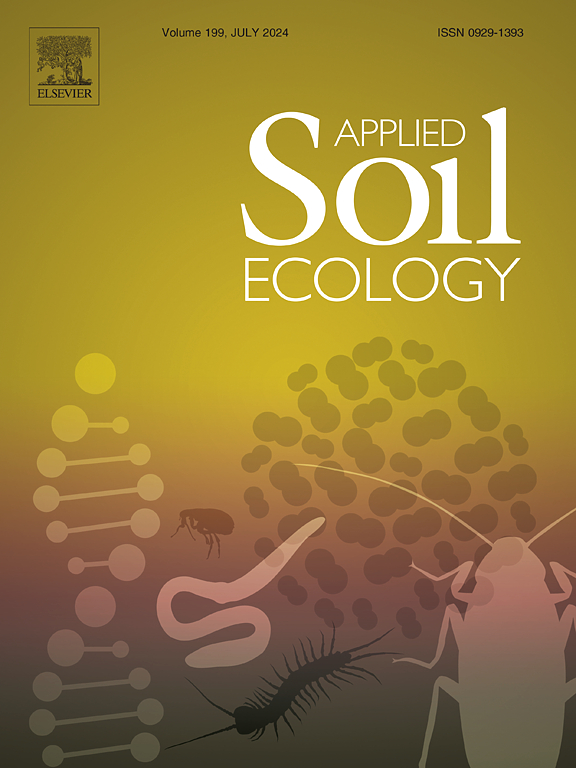Effects of cropland abandonment succession on soil microorganism and multifunctionality in the arid zone of Northwest China
IF 4.8
2区 农林科学
Q1 SOIL SCIENCE
引用次数: 0
Abstract
Soil microorganisms play a critical role in the succession of terrestrial cropland abandonment and the maintenance of ecosystem functions. However, the extent to which and how the soil microbiome and its interactions influence soil ecosystem multifunctionality in the context of cropland abandonment restoration and tillage remains largely unexplored. In this study, we selected abandoned cropland with varying abandonment durations (0 years: maize cultivation/maize-vegetable rotation, 20, 40, and 60 years) as succession stages to investigate the microbial composition, diversity, co-occurrence networks, and community assembly mechanisms of bacteria and fungi, and further explore their relationships with soil multifunctionality. As abandonment progressed, significant changes were observed in the soil microbial community structure, including shifts in α/β diversity, network structure, and community assembly processes. Notably, both the bacterial richness index and the fungal Shannon index exhibited significant correlations with soil multifunctionality. Network analysis revealed that abandonment led to a reduction in the complexity of bacterial networks, while fungal networks became more complex. As the duration of cropland abandonment increased, the assembly processes of bacterial communities shifted from stochastic to deterministic. Random forest analysis identified soil moisture (SM) and total phosphorus (TP) as the most significant predictors of soil multifunctionality. Structural equation modeling (SEM) further indicated that soil multifunctionality was directly affected by abandonment and indirectly influenced by bacterial diversity rather than plant and fungal diversity. Our findings provide valuable insights into the effects of natural cropland restoration in arid regions on soil microbes and ecosystem functions.
求助全文
约1分钟内获得全文
求助全文
来源期刊

Applied Soil Ecology
农林科学-土壤科学
CiteScore
9.70
自引率
4.20%
发文量
363
审稿时长
5.3 months
期刊介绍:
Applied Soil Ecology addresses the role of soil organisms and their interactions in relation to: sustainability and productivity, nutrient cycling and other soil processes, the maintenance of soil functions, the impact of human activities on soil ecosystems and bio(techno)logical control of soil-inhabiting pests, diseases and weeds.
 求助内容:
求助内容: 应助结果提醒方式:
应助结果提醒方式:


